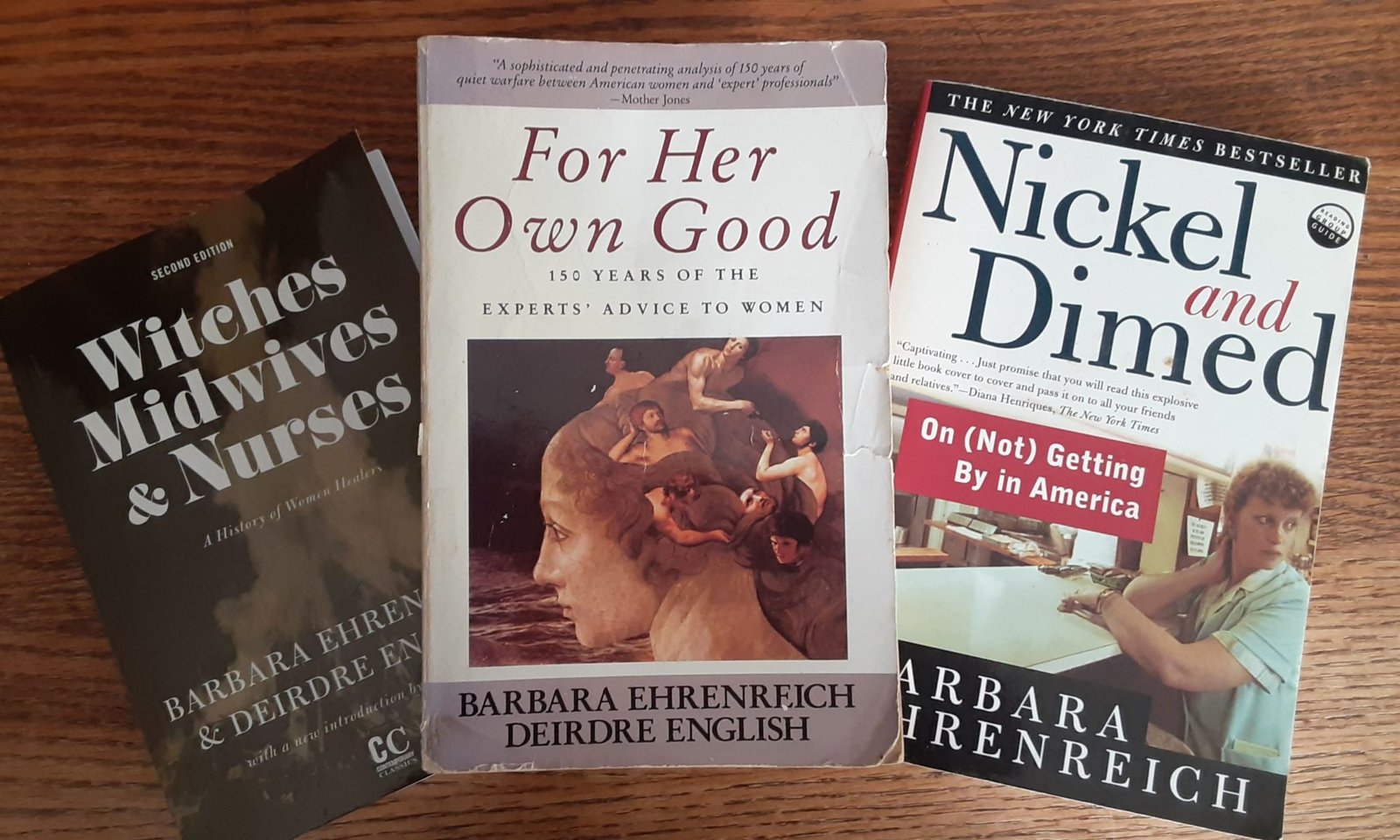I never think delusion is ok.
Barbara Ehrenreich in an interview with Jon Stewart
Barbara Ehrenreich died on September 1, 2022 at the age of 81. She was a modern-day muckraker who’s books exposed sexism and rampant capitalism in the health care system, wage inequalities, the latest silly fads in psychology and the challenges of living in our modern capitalist America. Her best selling 2001 book Nickel and Dimed: On (Not) Getting By in America, is a memoir of her three-month experiment surviving on a series of minimum wage jobs. It is an easy read, a bit of a “one hit wonder” and ironically gave her some financial freedom to continue to write on topics of her choosing. You can read the New York Times obit which seems to have been picked up by other papers and is the only obit of Barbara Ehrenreich that I could find.
I have three of Barbara Ehrenreich’s books. It has baffled me how of all her books Nickel and Dimed was so successful. People did not know that living off of a minimum wage job is next to impossible? But then again Nickel and Dimed was written as gonzo journalism and hit right when reality television shows were coming of age. People often read to confirm their beliefs not to challenge them. Many of Ehrenreich’s books were written in this first person, lived confessional style. However, to this reader, if you want to read some of her most interesting and powerful works, read the books she co-wrote with Diedre English, Witches, Midwives, and Nurses: A History of Women Healers (1972). and For Her Own Good: Two Centuries of the Experts’ Advice to Women (1978) were she writes as a researcher and scholar about the disenfranchisement of women and the transformation of healthcare over the last 200 years. This is a story that our present medical model and especially the AMA (American Medical Association) does not want the public to know.
Witches, Midwives, and Nurses: A History of Women Healers ( For Her Own Good: Two Centuries of the Experts’ Advice to Women are both books written in the 1970s at the height of Second-wave feminism. Both books look at the history of medicine and how the role women as healers and experts was usurped by the emergence of a medical “profession.” The overriding theme is how this new male dominated profession dealt with what was called the “Woman Problem.”
For decades into the twentieth century doctors would continue to view menstruation, pregnancy and menopause as physical diseases and intellectual liabilities. Adolescent girls would still be advised to study less, and mature would be treated indiscriminately to hysterectomies, the modern substitution for ovariotomies. The female reproductive organs would continue to be viewed as a kind of frontier for chemical and surgical expansionism, untested drugs, and reckless experimentation.
For Her Own Good: Two Centuries of the Experts’ Advice to Women
In many ways this sort of medical arrogance has continued. For years women who went through menopause would be prescribed hormone replacement therapy to deal with their “Woman Problem,” as though nature needed help with the natural process of life and aging. It was later found that hormone replacement therapy created risks including heart disease, stroke, blood clots and breast cancer.
And as of 2014, gender is now considered a pre-existing medical condition where God often seems to makes “mistakes.” In many ways, if you connect the dots, the “Woman Problem” has not ended – it just has been repackaged.
Hopefully, someone will take up the torch of critical thinking that Barbara Ehrenreich lit and continue on with her early style of research and questioning the medical establishment and the powers that be. An interesting study would be how the profession has changed now that women are entering the field of medicine at about the same rate as men.

